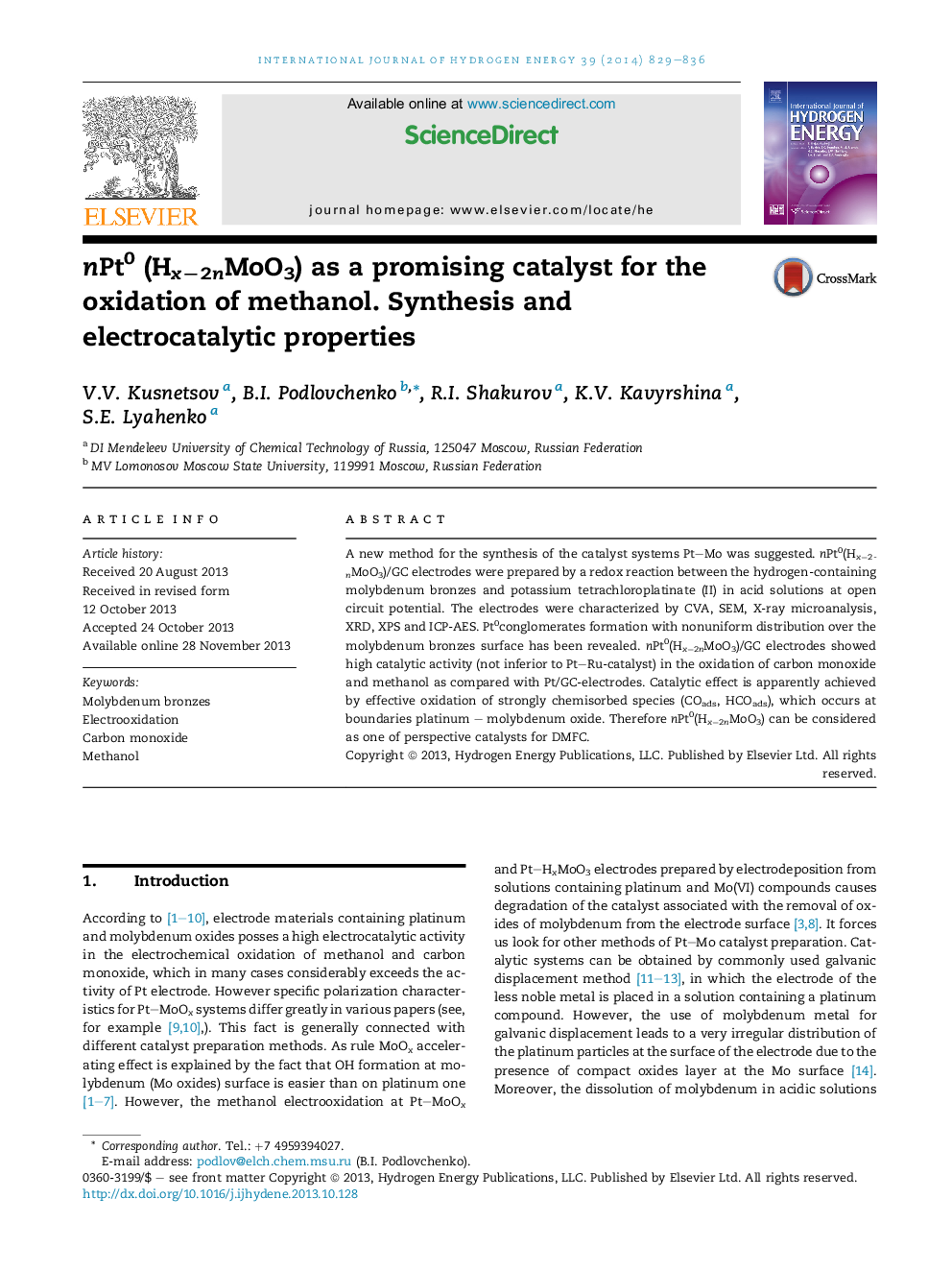| Article ID | Journal | Published Year | Pages | File Type |
|---|---|---|---|---|
| 1276527 | International Journal of Hydrogen Energy | 2014 | 8 Pages |
Abstract
A new method for the synthesis of the catalyst systems Pt-Mo was suggested. nPt0(Hxâ2nMoO3)/GC electrodes were prepared by a redox reaction between the hydrogen-containing molybdenum bronzes and potassium tetrachloroplatinate (II) in acid solutions at open circuit potential. The electrodes were characterized by CVA, SEM, X-ray microanalysis, XRD, XPS and ICP-AES. Pt0conglomerates formation with nonuniform distribution over the molybdenum bronzes surface has been revealed. nPt0(Hxâ2nMoO3)/GC electrodes showed high catalytic activity (not inferior to Pt-Ru-catalyst) in the oxidation of carbon monoxide and methanol as compared with Pt/GC-electrodes. Catalytic effect is apparently achieved by effective oxidation of strongly chemisorbed species (COads, HCOads), which occurs at boundaries platinum - molybdenum oxide. Therefore nPt0(Hxâ2nMoO3) can be considered as one of perspective catalysts for DMFC.
Related Topics
Physical Sciences and Engineering
Chemistry
Electrochemistry
Authors
V.V. Kusnetsov, B.I. Podlovchenko, R.I. Shakurov, K.V. Kavyrshina, S.E. Lyahenko,
